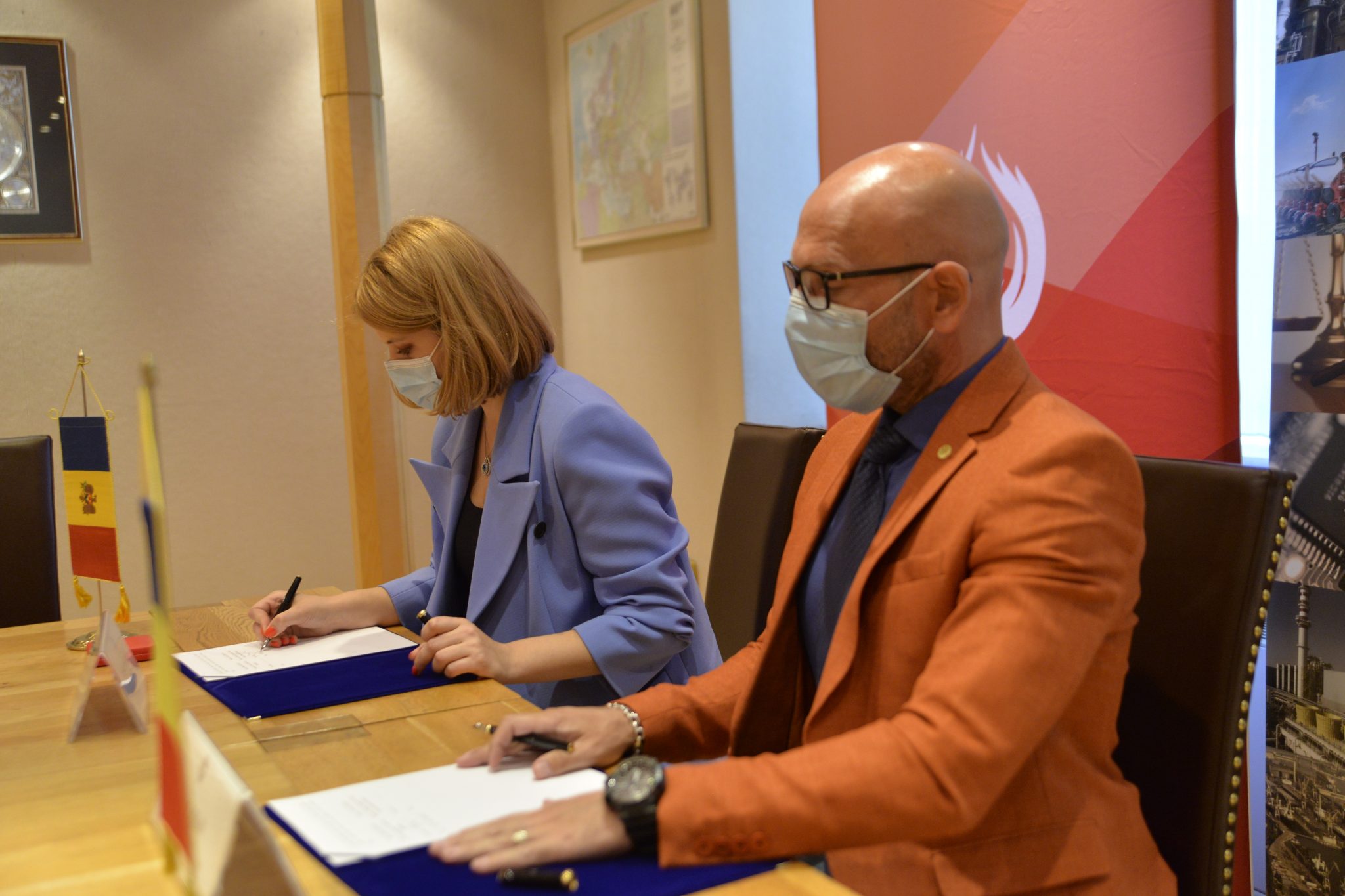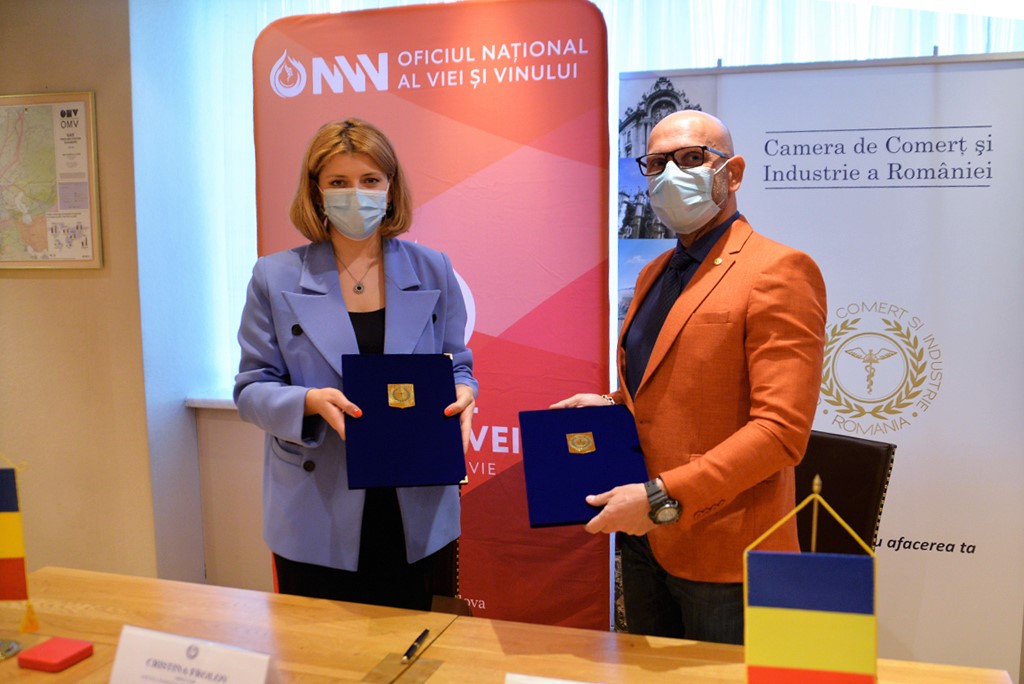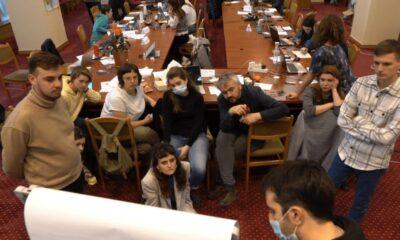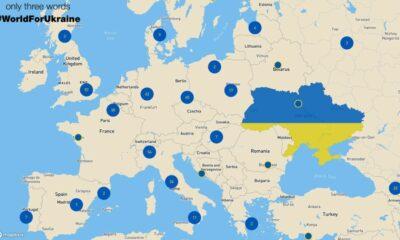Economy
Analysis: Mortgage lending – a solution for constructions sector’s recovery in Moldova
Reading Time: 12 minutesA dwelling constitutes the most invaluable part of a family’s welfare. Lack of a home reveals the financial vulnerability of families and is a major cause of the population’s massive external migration. Republic of Moldova has the lowest per capita housing space in the region. This can be explained by limited access of the population to mortgage loans.
By Adrian Lupuşor
A dwelling constitutes the most invaluable part of a family’s welfare. Lack of a home reveals the financial vulnerability of families and is a major cause of the population’s massive external migration. Republic of Moldova has the lowest per capita housing space in the region. This can be explained by limited access of the population to mortgage loans. Over the past few years this deficiency has been concealed by an energetic growth of remittances-fueled demand for housing. Given the global economic crisis that seriously hit constructions market, it became obvious that the recovery and sustainable development of the sector would only be possible when a mortgage lending mechanism is in place. The latter would compensate foreign sources fueling demand for residential housing with local ones. This analysis reviews the experience of other countries in the region and the measures taken to relaunch the constructions sector, setting, as example European practices of stimulating mortgage lending that could be adapted to the current situation in the Republic of Moldova.
The constructions sector and the impact of the three overlapped crises
The constructions market, along with the financial-banking sector and industry were the mostly affected by the global economic crisis. According to National Bureau of Statistics data, by the end of 2009 the volume of services provided by construction companies decreased by 30.6% against 2008, and the gross value added diminished by 27.6%. This has consequently mirrored on the overall economic situation in the Republic of Moldova, the constructions sector contributing with -1.4 p.p. to the Gross Domestic Product decline in 2009. Literally speaking, these figures were determined by the lack of liquidities, frozen housing projects, individuals unable to either get their legally owned apartments or be reimbursed for the down payments made, workers dismissed or sent on temporary leave etc. Therefore, the recession in the constructions sector has both economic repercussions, given the high involvement with other economic fields, and social implications reflected in dismissals or the inability to provide houses to the persons who’ve already paid for their prospective homes. The sector has thus become victim of three overlapped and interdependent crises.
1. Systemic crisis – core of the constructions sector’s recession. The current situation in the constructions sector has not only been determined by the effects of the economic crisis, such as the decrease in remittances, and compression of demand for housing. At the beginning of 2008, id est a little before the start of the global economic crisis, the volume of works in the constructions sector started a downward trend. Thus, by the end of the first quarter of 2008 construction companies reduced their activity by 10%, as against the previous year, at a moment when demand did not show signs of decreasing, a proof of which was a steady price growth until the fall of 2008. This first recession in the constructions sector can be explained by a number of deficiencies, including:
• Inefficiency. Starting with the early transition years, up to 2006 the constructions sector generally registered the lowest labor productivity indices, as compared with other sectors of the national economy [1] . Over the past few years the situation changed, given a stagnation of the industry index, Mortgage lending – a solution for constructions sector’s recovery. A look into the European and international practices regress in agriculture, as well as the real estate boom in 2005-2006, when a record number of residential projects were finalized (about 60 [2]). However, the current condition of a major part of companies within the sector speaks of inefficiency, in terms of inner administration and assets’ management.
• Bureaucracy. The load of red tape procedures for obtaining construction licenses has always been a serious impediment for the development of an efficient entrepreneurial activity in the sector. The respective problem has been reflected in the World Bank report „Doing Business 2010”, Republic of Moldova ranking 161st among 183 rated countries, in terms of construction permits [3].
• Lack of an attractive mortgage offer. The low trust level in the banking sector undermined the commercial banks’ ability to provide long-term mortgage products with attractive interest rates. These loans’ share in the overall lending portfolio of the banking system fluctuated from 2% to 4 %, being even lower in 2009.
• Ineffective regulatory framework [4]. The tedious enforcement of court rulings, a “deceased” land market, ambiguities related to assessment of the housing market value have all had a negative impact on the population’s access to mortgage loans and fueled commercial banks’ reticence to provide long-term loans. At the same time, mortgage law came into force in 2008 only, pointing to the fact that the rules of the game were unclear until then. Currently, the sector faces problems relating to the implementation of the legislation, especially with regard to enforcement of court rulings.
2. The liquidity crisis – result of defective assets’ management. A great number of companies – developers financed real estate projects based on a financial pyramid model: initial down payments made by prospective tenants were used for new housing projects. Obviously, such deals can endure as long as there are „warm” relationships with the banking system, able to cover the liquidity deficit. Once banks adopted more cautious lending policies, as well as unveiled such „non-orthodox” schemes of using people’s money, the constructions market found itself „thrown” into a liquidity crisis. Finally, this led to freezing a number of real estate projects and generated major problems with the solvency of many housing companies, difficulties in contracting loans, individuals reclaiming down-payments etc.
3. A crisis of confidence – major challenge facing the constructions sector recovery. The insolvency of many construction companies seriously damaged their image both with potential lenders, much more cautious when financing housing projects, and the population, skeptic and prudent in this regard. Thus, the global financial crisis, the symptoms of which were felt in the fall of 2008 has only enhanced the existent system deficiencies within the sector. These had been shadowed by an impetus given by remittances that directly impacted demand for residential housing, and indirectly strengthened the demand for other immovable property by fueling aggregated demand in the economy.
European countries’ reaction to the effects of the crisis in constructions
The global financial crisis has seriously impacted the constructions sector in many European countries. There are two types of measures to recover the sector: 1) direct demand stimulation by means of expansionist monetary and budget-fiscal policies; and 2) stimulating the offer by implementing structural reforms in the sector. Most European states focused more on the first category, given the access to European structural funds, lower cost of the borrowed capital or simply „deepen pockets”, public funds could be taken from. It is worth mentioning that the decline in the constructions sector, especially in Western European countries, was caused by the demand shock rather than by systemic problems specific to Eastern European states, as is the case of the Republic of Moldova. Table 1 (below) shows the most significant measures taken by a number of European countries targeting the recovery of the constructions sector, and the approximate inherent costs. The red line to be drawn, based on the data analysis is that the „salvation” of the constructions sector is very costly. Therefore, Moldova should focus on measures aimed at maximizing the chances to succeed.
Major challenges facing mortgage lending furthering in the Republic of Moldova
The main barrier impeding the recovery of the constructions sector relates to individuals’ low level of accessibility to housing, determined by the lack of relatively attractive mechanisms of mortgage lending. Table 2 (below) provides general data on up-to-date mortgage offer on the Moldovan market. Note, that the maturity of such loans varies from 7 to 15 years, interest rates range from 10% to 20%, with the monthly interest rate on a loan worth EURO 50.000 amounting to EURO 800-1000. Taking into account the fact that the maximum indebtedness allowed by most financial companies constitutes 50%, the inherent interest rates on mortgage loans can be paid only by households with monthly incomes of at least MDL 29–30 thousand. Given the situation, when the average monthly wage in the economy at the beginning of 2010 was MDL 2699.5, any other comments on the accessibility of mortgage loans in the Republic of Moldova are useless.
Why are mortgage loans so expensive in the Republic of Moldova?
The relatively high interest rate on mortgage lending in the Republic of Moldova can be explained by the low mutual trust level between the population and the banking system. The latter is caused by a series of factors specific to transition economies, including: macroeconomic instability and increased uncertainty regarding economic prospects. A thorough analysis of the reasons leading to expensive mortgage loans points to:
1) The cost of the capital attracted by commercial banks. Though lately one can note a decrease of rates on deposits attracted by commercial banks, up until recently, including the first half of 2009, these ranged within the limits of 18%-20% for loans in MDL and 10%-11% – in foreign currency. Taking into account the 3-4% commercial interest usually applied by the banks, interest rates on all loans, mortgage ones included, became very high.
2) Inflationary pressures. Over the past few years, except for 2009, Republic of Moldova has always been registering a two-digit inflation, which impacted nominal rates on deposits and, respectively loans.
3) Insufficiency of „long money”. The low confidence in the banking sector determined the fact that most deposits, both in MDL and foreign currency can be made for no more than one year. At the beginning of 2010, only 7.1% in total deposits in MDL were available for a one plus year-term, and 5.1% – in total deposits were in foreign currency. Therefore, these resources cannot be converted into long-term loans and when commercial banks resort to financing such projects, they charge increased risk premium included in commercial rates, taking into consideration risks generated by eventual withdrawals.
4) Heightened uncertainties regarding the prospects of national currency evolution and inflation. Republic of Moldova is a country with a small and open economy, its low competitiveness making it even more fragile to inside and outside shocks. This fact has always fueled commercial banks’ self-restraint to provide long-term loans, so that most of the times their interest rates included increased risk premiums.
Mortgage lending limited accessibility to the population is a major impediment for the recovery and further development of the constructions sector. In the past years, this deficiency has been concealed by a robust increase of demand for housing, fueled by remittances, while viable domestic mechanisms to stimulate demand for real estate were practically inexistent. Consequently, per capita housing in the Republic of Moldova is one of the lowest in Europe (Diagram 1). This clearly reveals the problems related to the population’s access to housing, and, on the other hand shows the huge potential of the real estate market in the country.
What are the solutions? The shortage of „long and cheap money” vital for mortgage lending is a common problem for most transition economies. Therefore, this issue has been addressed by the governments of several states in the region, which came with a number of solutions allowing greater access to mortgage loans. The most successful are synthesized below.
1. Individual accumulation plans
This mechanism stimulates the population to make longer-term savings (for ex. 3-5 years), being rewarded with possibilities to obtain mortgage loans for terms and with interest rates below the market average. This concept was implemented in Germany and Austria („Bausparkaasen” system), France („Credit differe” system), Great Britain and Ireland („Building societies” system). Noting that the respective system aims at ensuring mortgage loans’ accessibility to families with low or medium incomes, the concept has been taken over by several Central and Eastern European states (Czech Republic, Slovakia, Hungary, Croatia, Ukraine etc.). The system also solves another fundamental problem, specific to most transition countries: the low trust level in the banking sector and the shortage of „long and cheap money” administered by commercial banks.
Diagram 1 (below) shows that individual accumulation schemes function like mortgage lending mechanisms on the account of prospective tenants. Thus, an individual planning on applying for a mortgage loan on relatively attractive terms has to sign an accumulation contract, pledging to make at determined periods of time (3-5 years) deposits (monthly or quarterly), accumulated in a term deposits’ fund, provided that upon contract expiry he/she is to receive a mortgage loan worth 120%-130% of the deposit value. Obviously, the inherent interest rate is lower than the market average. The bank has to provide a mortgage loan upon deposit maturity and have the opportunity to provide loans at attractive rates. At the same time, commercial banks succeed in attracting long-term reserves, which positively tell on mortgage lending. According to preliminary calculations, if applied in the Republic of Moldova, this system could allow a three-fold decrease in the monthly rates on mortgage loans, taking into account the reduction in interest rates and significant increase (about two-fold) of the maximum loan life. Eventually, this mechanism can complement other mortgage lending instruments, further analyzed.
2. Issuance of mortgage bonds
In several European states (Germany, Denmark, Austria, France, Spain, Luxemburg) mortgage loans’ financing is made on the account of issuance by specialized institutions (mortgage banks) of mortgage bonds. Thus, mortgage products are not based on deposits made by the population, as per classical principle of commercial banks’ functioning, but rely on private pension funds or other private investors, including foreign ones, who buy mortgage bonds with relatively long maturity terms (ex. 5-10 years). The European Union legislation strictly regulates the process by means of restrictions aimed at avoiding the “bubble” effect, like the US one over the past decades. Thus, the mortgage loans’ volume cannot exceed the volume of issued bonds, inherent interest rates must be at least at the level of the respective coupons, specialized institutions insure loans, and the default procedure is clearly stipulated. This system is very well protected from eventual financial and economic turbulence, the banks and the population having access to „cheap and long money”.
Obviously such a practice can only be gradually implemented in the Republic of Moldova, taking into account the scarcity of liquidities on the capital market, the macroeconomic instability (especially in terms of inflation) and the low trust level in financial institutions. However, the respective tool can be complemented by other mortgage products, in such a way that mortgage bonds could finance 30%-40% of the mortgage loan on the market. This leads to another question: „Who would be willing to purchase mortgage bonds with long maturity terms?” The answer is: private pension funds, based on accumulation principles, as is the case of most European states. This will make available sufficient long-term liquidities to be used for financing mortgage loans. An estimate shows that a gradual implementation of such a reform, provided that the share of deposits redistributed from the pensions’ system gradually increases by 3% to 7% yearly, would generate liquidities amounting to MDL 450 million in the first year, part of which (approx. 60%) could be used for mortgage loans’ financing [7] .
3. Taking over the default risk by a third party (for ex.: „Prima Casă”, insurance companies, specialized funds, etc.)
Commercial banks’ skepticism regarding the economic prospects of the population has always fueled debtor’s default risk managed by banks, especially what regards mortgage loans. Therefore, the risk premiums included in the loans’ commercial rate have always been relatively high, which was and still is a major impediment for loans’ reduction. But, the biggest problem does not refer to these risk premiums, which function is obvious in any transition state, but to the way the risk is being managed. Currently, the mortgage default risk in the Republic of Moldova is administered directly by banks, which means that the risk is not capitalized and managed by a specialized institution (such as an insurance company, specialized fund, etc.). This explains why risk premiums are relatively high and the banks are cautious in providing mortgage loans. A number of states all over the world resorted to transmitting the default risk to third parties (specialized companies, private or public).
The principle of mortgage guarantee insurance is the following: the financial institution providing the loan receives a guarantee from the insurance company, worth the equivalent of the covered risk, according to which, in case of debtor’s insolvency, the bank can redeem the value of the loan according to the respective risk share.
The functioning principle of insurance companies in various countries differs. Some practice classical risk insurance, the banks resorting to either private insurance companies, or specialized institutions, paying annual premiums against default risk managed by the insurance firm. In other countries default risk is being covered by specialized mortgage guarantee funds, made of public money. A good example is the program „Prima Casă” (First House), recently launched in Romania, guaranteeing 80% of the mortgage loan value. The biggest difference between the two principles lays in the fact that private insurance companies cover, most of the times, a smaller share of the loans’ value (20%-40%), while public institutions vouch for 80%-100%. At the same time, rates on loans insured by private companies are higher than the ones guaranteed by the state, because of the insurance premium paid by the banks and included in the loans’ commercial rate.
However, though the option for a state guarantee of the default risk seems more advantageous due to more attractive interest rates on mortgage loans, one should take into consideration the following aspects:
• The risk of moral hazards from commercial banks. Given a fund to take over „free of charge” default risk, commercial banks credit persons who can fail, at a certain moment, to reimburse the loan. In this case, the loan is being reimbursed from public money. The situation is worse when the state assumes responsibility to guaranteeing the total loan value.
• The risk of toxic assets to be covered from budgetary sources. Covering such losses from public money will lead to preserving losses within the system, so that the banks will be more and more compelled to credit individuals with low incomes, against a state guarantee, and the losses will consequently hit the public budget.
• The need to make available public means. Most of the times, state guarantees involve the creation of specialized funds to be used for covering eventual losses incurred by the banks. The respective funds are made of public money, which means that indirectly, default risks are transposed on all taxpayers, including lenders.
The Moldovan government should take into account the above-mentioned aspects, when working out a mechanism to guarantee mortgage loans. It is worth mentioning that in Romania – country where there has recently been implemented the program „Prima Casă” (First house), there are already being heard voices pointing to the risk of soon witnessing the first bankruptcy cases. Moreover, the Romanian Government has not established a separate Fund for covering such expenses, using instead the National Fund to support small and medium-size enterprises. This is a big mistake, leading to the investments’ „crowding out”. Within the context of the Republic of Moldova, a viable solution would be the creation of public-private partnerships, which could allow default risks’ sharing between the state, insurance companies and banks at a ratio of 40:40:20. The state should set up a Special Fund; insurance companies could transfer part of the risks through re-insurance to foreign companies with greater experience in the field. This golden measure would allow avoiding commercial banks’ moral hazards on one hand, and diminishing mortgage loan interest rates on the other hand.
Drawing a conclusion…
Finding viable operating mechanisms for mortgage lending, accessible to larger parts of the population should be one of the priorities on the Government’s agenda. The recently launched initiative regarding the implementation of a mortgage lending stimulation program (based on the model of the Romanian “First House”) should be accompanied by a complex set of measures, aimed at solving a series of systemic problems, including: scarcity of long-term reserves within commercial banks; tedious enforcement of court rulings in mortgage-related cases; harmonizing the regulatory framework; clearly stating each party’s responsibility within the system. One has to also take into account the moral hazards prone to appear within commercial banks in the case when the state guarantees mortgage loans. The solution could be to establish a public-private partnership with a view to guaranteeing default risks, involving insurance companies and simultaneously set up a special fund based on public money. It is also necessary to keep in mind the other mentioned mechanisms (individual accumulation schemes and mortgage bonds), also to be used as complementary tools, given the underdeveloped capital and insurance markets, the population’s limited financial capacity and budgetary constraints. A balanced combination of these would generate new and more attractive mortgage lending instruments, so that a greater number of Moldovan families could have the opportunity to enjoy their own house’s square meters.
Sources:
[1] Moldovan Economic Growth Analysis (MEGA), nr. 1, Expert-Grup.
[2] As per Real Estate Guide 2008.
[3] http://www.doingbusiness.org/Documents/CountryProfiles/MDA.pdf.
[4] Mortgage Law no. 142 as of 26.06.2008.
[5] The results of the calculations are approximate and do not include the relevant fees charged by financial institutions for providing and administering loans.
[6] Rates can be slightly modified, depending on the borrower’s lending history.
[7] Lupuşor Adrian, Master’s paper „The feasiblitity of implementing private pensions’ system in the Republic of Moldova. International experience and current social and demographic constraints”, 2010.
Economy
Moldova will receive a disbursement of 36 million euros as part of the the Economic Recovery Plan

This week, the European Commission approved the disbursement of 36 million euros in grant money for the Republic of Moldova. The announcement was made by Deputy Director-General for Neighbourhood Policy and Enlargement Negotiations at the European Commission, Katarina Mathernova, who paid an official visit to the Republic of Moldova between September 13-15, together with Managing Director for Russia, Eastern Partnership, Central Asia, Regional cooperation and OSCE, at the European External Action Service, Michael Siebert.
The EU officials had meetings with President Maia Sandu, Minister of Foreign Affairs and European Integration, Nicu Popescu, Speaker of Parliament, Igor Grosu, Prime Minister of the country, Natalia Gavrilita, as well as key representatives of Government, international financial institutions and the civil society, according to a press release issued by the Delegation of the European Union to the Republic of Moldova.
Beside such topics as the EU-Moldova relations and prospects, the priorities of the reform agenda of the new Moldovan Government, preparations for the Eastern Partnership Summit at the end of the year and the Transnistrian conflict settlement, the officials also discussed the EU assistance in support of reforms and the Economic Recovery Plan for Moldova, which was announced in June with a total EU support of 600 million euros over the next 3 years.
“The first measures under the Economic Recovery Plan will shortly materialize, with the expected disbursement of 36 million euros in grant money under budget support programmes to support the authorities’ efforts to fight against the consequences of the pandemic. Moldova can count on EU’s assistance on its path to reforms and to recovery, bringing tangible results to citizens,” Katarina Mathernova stated.
The plan is based on assistance provided by the European Union through various bilateral and regional instruments, aiming to mobilize the funds in the form of grants, loans, guarantees and macro-financial assistance.
“The Economic Recovery Plan for the Republic of Moldova involves much more, not just this financial support provided immediately. It must help digital transformation, strengthen infrastructure, energy efficiency, education and support small and medium-sized enterprises,” the EU official also said.
As Prime Minister Natalia Gavrilita informed, “The Economic Recovery Plan and the 5 flagship initiatives for Moldova in the Eastern Partnership will directly contribute to the reform and consolidation of institutions, stimulate long-term socio-economic development, bring direct benefits to citizens, and unleash new economic opportunities through promoting the green agenda and digitization. Small and medium-sized enterprises (SMEs) have been hit hard by the crisis. Promoting and diversifying access to finance and reducing collateral requirements will be essential in supporting economic operators. We are grateful to the EU partners who will launch two programs to support 50 000 independent Moldovan SMEs to adapt to the new conditions.”
President of the Republic of Moldova, Maia Sandu, welcomed the decision of the European Union to disburse about 745 million lei in grant money, as the official page of the President’s Office announced. “EU support comes after a long period of freezing of European assistance, caused by former governments. We managed to relaunch the political dialogue with the European Union and resume financial assistance. The Republic of Moldova is gradually regaining the trust of its strategic partners. This European support is also a signal of encouragement for the new Government team in its commitment to clean up the institutions, fight corruption and launch development programs in the country,” said Maia Sandu.
Photo: unknown
Economy
Romania and Moldova signed a partnership memorandum pledging to cooperate in promoting their wines

The Chamber of Commerce and Industry of Romania (CCIR) and the National Office for Vine and Wine (NOVW) of the Republic of Moldova signed, last week, a memorandum of cooperation on organizing joint promotional activities in the markets of common interest, as the CCIR announced.
China, Japan or the USA are just some of the markets targeted by the Romanian and Moldovan institutions. The memorandum also involves advertising activities for wines from common indigenous varieties, promoting the oeno-tourist region, developing a tourist route in the two states, exchange of experience, study visits, and mutual support in identifying new export opportunities. “We are very confident that this collaboration between our organizations will lead to sustainable economic growth and a higher degree of well-being among Moldovans and Romanians,” claimed Deputy Secretary-General of CCIR, Bogdan Visan.
On the other hand, Director of the NOVW, Cristina Frolov, declared that no open competition with Romania is aimed at the governmental level of the Republic of Moldova. “This request for collaboration is a consequence of the partnership principle. Romania imports 10-12% of the wine it consumes, and we want to take more from this import quota. Every year, the Romanian market grows by approximately 2.8%, as it happened in 2020, and we are interested in taking a maximum share of this percentage of imported wines without entering into direct competition with the Romanian producer,” the Moldovan official said. She also mentioned that Moldova aims at increasing the market share of wine production by at least 50% compared to 2020, and the number of producers present on the Romanian market – by at least 40%.

Source: ccir.ro
**
According to the data of the Romanian National Trade Register Office, the total value of Romania-Moldova trade was 1.7 billion euros at the end of last year and over 805 million euros at the end of May 2021. In July 2021, there were 6 522 companies from the Republic of Moldova in Romania, with a total capital value of 45.9 million euros.
The data of Moldova’s National Office of Vine and Wine showed that, in the first 7 months of 2021, the total quantity of bottled wine was about 27 million litres (registering an increase of 10% as compared to the same period last year), with a value of more than one billion lei, which is 32% more than the same period last year. Moldovan wines were awarded 956 medals at 32 international competitions in 2020.
Photo: ccir.ro
Economy
Moldova’s hope to be a top walnut exporter and its main difficulties

The Republic of Moldova has perfect weather conditions for growing walnut trees, that creating a great potential of walnut production and trade, especially on international markets, where the demand is way higher than the product’s supply. National and international experts believe that the country’s walnut production industry is on the verge of important transformations, which could lead to increased yields, quality and competitiveness worldwide.
According to authorities, Moldova exports 34-35 thousand tons of walnuts in shell, which is about 7% of the total export of fruit and 5% of the total export of horticultural products. The export value is assessed as being $120 million, that being 57-60% of the total fruit export value and about 50% of horticultural export value. Most of walnut crops are exported to the EU countries, such as France, Germany, the Netherlands, Romania and Austria. The country’s exports were among the world’s top 10 when it comes to the highest dollar value of the product during 2020.
Viorel Gherciu, Minister of Agriculture and Food Industry, pointed out that the production in the domestic walnut industry has increased by 55% in the last five years, which ranks Moldova among the main producers in the world.
“The biggest opportunity for this industry is that we are in the geographical proximity of the largest walnut import area in the world, which is the European Union, with almost 40% of total imports in the world. We are on the EU border, with privileged relations, with an Association Agreement. We already enjoy a good relationship in working with European importers, they trust our processors. A very close collaboration has been created and this is, in fact, the guarantee for those who invest in the area,” claimed the president of the Walnut Producers Association, Oleg Tirsina.
The data provided by the National Bureau of Statistics show that there are 34.7 thousand hectares of walnut plantations in the country. 20.90 hectares are represented by orchards. 75% of planted orchards are formed of old varieties trees. 30-35% of the exported production comes from orchards, the rest comes from individual farmers and plantations along the roads. This means that the quality of walnut production is not at its maximum potential. Developing commercial plantations through orchards modernization and extension of walnut varieties would provide double yield and better quality, experts say.
Governmental support in the form of subsidizing solutions, foreign investments and credit options are indispensable for the industry development. One of the financing options is the credit line of the European Investment Bank Project. Since 2016, 15 producers and processors of nuts, almonds and hazelnuts have benefited from these loans with the total amount of investments worth 8.7 million euros. A further extension of the project would provide another 60 million euros for the modernization of the horticultural sector in general and for harvesting organic walnuts in particular.
Photo: heymoldova.com





















